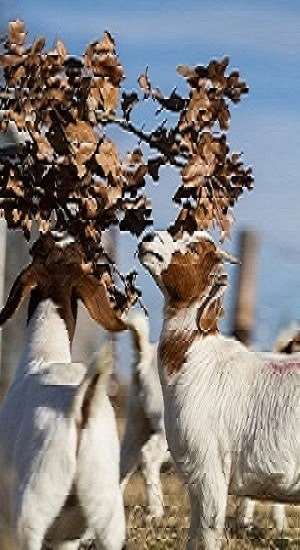
The meat goat industry has become one of the fastest growing agricultural industries in the United States over the last few decades. Between 1987 and 2012, the number of meat goats increased by 395 percent from 415,196 to 2,053,228. Contributing factors to this growth include increased demand from immigrants who consume goat meat, establishment of the American Meat Goat Association and the repeal of 1954 Wool Act. In spite of the significant increase in domestic production, consumer demand continues to outpace production with the shortfall supplied primarily from Australia and New Zealand.
According to the 2012 United States Census of Agriculture, producers in Oklahoma and Texas produced 37 percent of the total U.S. meat goat production. This makes them a major supplier of goat meat in the country. Because of the production size in this region and the overall shortfall in domestic production, we conducted a survey of meat goat producers to gain a better understanding of the makeup of the industry and to help us discover potential benefits and challenges that may exist for those who might be interested in getting in the meat goat business in the region.
Survey responses from 62 meat goat producers operating in the region revealed the average farm size was 369 acres, on which 214 acres were used to produce an average of 75 meat goats per farm. In addition, 74 percent indicated they followed a pasture-based management system. Furthermore, the average age of producers was 54 years, and 81 percent of them have a college degree. Moreover, 37 percent of the respondents reported they consider themselves to be risk-averse, and 54 percent hold an off-farm job. In terms of marketing, producers reported that on average 40 percent of their farm income is derived from selling meat goats. However, only about 15 percent of their total household income is generated from the meat goat sales. In addition, 86 percent of meat goat producers reported selling their goats directly to consumers, while 73 percent market their goats through auctions.
In addition to questions to help us understand general farm and producer characteristics, we also asked questions to better understand the perceived benefits and challenges associated with the meat goat business. Producers were asked to rate their responses to questions from a low to high level of importance (i.e., from 1 to 5). The questions and mean responses for these two categories are reported in Table 1. The results indicated that enjoyment from working with goats, being a good fit to the overall land management plan and the ability to raise goats on small acreages were the top three perceived benefits. Although the results show profitability is important, it is not as important as quality-of-life goals, like the enjoyment obtained with working with goats on small scale.
Click here to see more...